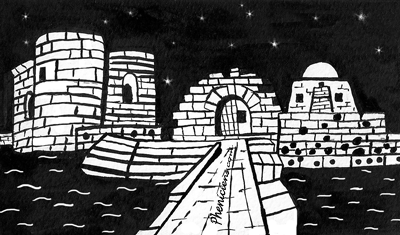The mutation of small Canaanite villages to urban cities took place at the beginning of the Bronze Age (Early Bronze 3200-2000 BC.). At the end of the third millennium, the model of city-state settles and becomes the standard of the Phoenicians cities.
Between the ports cities scattered all along the east coast of the Mediterranean, the lack of unity was obvious. In part, to physical geography marked by a variety of landscapes such as the mountain ranges of Lebanon, Anti-Lebanon Mountains, rivers and, in the other part, to the spirit of independence that characterized each city.
Surrounded by powers neighboring (Hittites, Mesopotamians, Egyptians …), these cities were dependent in one way or another to various empires, following the position of power in place. After the battle of Kadesh (around 1275 BC.), the Phoenician coast was divided between Hittites and Egyptians. Two regions of influence have been created with the plain of Akar as border.
The northern portion was under Hittites influence while the southern area was enclosed in the Egyptian political sphere. The Pharaohs exercised control by requiring superintendents and imposed some tributes to local rulers. While Hittites established relationships of vassalage through diplomatic channels by signing agreements with governors of those Phoenicians cities.
This stability was troubled around 1200 BC by the invasion of the "Sea Peoples" who destroyed the Hittite Empire and went along the coast over land and by sea, overwhelming Ugarit (Ras Shamra) and devastating several other cities. They were stopped by the army of Ramesses III at the Egypt's frontier. Some of them, including the Philistines, were established locally. At that time, Egypt started a period of decline. The peoples of the region and among, those who dwelled on the Phoenicians cities took advantage of this situation and benefited from independence until the advent of new conquerors (Assyrians, Babylonians, Persians, Greeks, Romans ...).
We had begun talk about history of some selected cities, those which are the most famous (Byblos, Tyre, Sidon ...). We will continue to present histories of other cities: Arwad, Biruta (Beirut), Sarepta (Sarafand), Kamed el Loz, etc.
